Australian sheep flock declines as producers prepare for gradual rebuild: MLA 2025 Sheep Projections update
Key points
- The national sheep flock has declined 6.2% to 74.2 million head, driven by poor seasonal conditions and elevated turn-off.
- Lamb production remains strong at 610,000 tonnes, supported by heavier carcase weights and grain feeding.
- Live sheep exports are tracking 3% below 2024 levels, with strong demand from the Middle East despite structural changes.
Australia’s sheep industry is navigating a challenging period, with the national flock contracting by 6.2% to 74.2 million head as of June 2025, according to Meat & Livestock Australia’s (MLA) Australian Sheep Industry Projections – September Update.
The decline follows two years of below-average seasonal conditions across key producing regions, particularly in South Australia, Victoria and southern New South Wales which have driven elevated lamb slaughter and mutton turn-off.
Production and slaughter
Despite seasonal pressures, lamb production remains resilient, with 610,000 tonnes forecast for 2025.
This is supported by heavier carcase weights, driven by increased grain feeding.
Lamb slaughter is expected to reach 24.9 million head in 2025, a 5.8% decline from last year’s record, while mutton slaughter is forecast to fall 15.4% to 9.97 million head as producers begin retaining breeding ewes.
According to MLA Market Information Manager, Erin Lukey, while slaughter volumes are easing, production remains robust thanks to improved finishing systems.
“We are seeing producers respond to seasonal volatility by adopting supplementary feeding practices for heavier carcase weights and more strategic turn-off decisions,” Ms Lukey said.
“This approach helps offset the impact of reduced lamb supply and inconsistent pasture availability typically seen in areas experiencing below average seasonal conditions.”
Exports and global demand
Australia remains a dominant player in global sheepmeat exports, accounting for 54% of total global volumes in FY25. While exports from New Zealand are forecast to decline due to structural changes in land use and flock size, Australia is well-positioned to maintain strong export volumes despite a temporary dip in production.
“Global supply is tightening, and Australia is in a strong position to meet demand,” Ms Lukey said.
“Our reputation for quality and consistency continues to underpin export growth, particularly in premium markets.”
Live export
In early 2025, export volumes were temporarily impacted by vessel availability issues, but demand from the Middle East especially remains strong.
From January to August, exports tracked 3% below the same period last year, with competition between processors and restockers helping to support market conditions.
Recent changes in the regulatory landscape have prompted some producers to reassess their business models and explore alternative market pathways.
Despite evolving conditions and structural changes, trade continues, reflecting the strength of underlying demand. However, looking ahead, tighter flock numbers and a forecast 30% decline in live export volumes by 2027 may challenge sourcing for the traditionally price-sensitive live export market.
As supply contracts, competition for suitable animals is expected to intensify, particularly in Western Australia, where live export plays a key role in production systems.
Looking ahead
Assuming average seasons ahead, Australia’s sheep industry is expected to enter a period of gradual recovery, with the national flock forecast to grow by 2.1% in 2026 and a further 4.3% by 2027, reaching 78.9 million head.
This rebuild will be driven primarily by natural increase, with producers focusing on ewe retention to strengthen the breeding base following two years of drought-induced destocking.
Lamb production is projected to rebound in 2027, reaching a record 651,000 tonnes, supported by both increased slaughter and heavier carcase weights. Grain feeding and lot-finishing systems are expected to play a growing role in maintaining supply consistency and lifting yield per head.
On the global front, tight supply from New Zealand and steady international demand are expected to support export opportunities for Australian sheepmeat. While domestic consumption may come under pressure from elevated prices, Australia’s position as a reliable, high-quality supplier remains strong.
Have your say
Today, MLA and AWI have released their lamb focused producer survey, which provides a profile of the lamb flock and measures of producer intentions for lambs and breeding ewes.
MLA’s flock modelling and market insights draw on the best available data, extensive consultation, and direct input from producers through industry surveys.
The Sheep Producer Intentions Survey results help analysts refine forecasts and improve the accuracy of industry analysis. They also guide the development of MLA programs, ensuring adoption and communication efforts are aligned with producer sentiment.
Find the Sheep Producers Intentions Survey form here, Sheep Producers Intentions Survey
Find the MLA 2025 Sheep Industry Projections – September Update here, MLA 2025 Sheep Industry Projections – September Update



